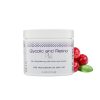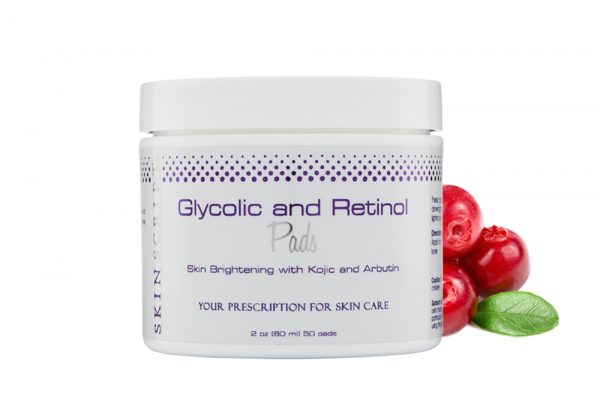Stretch marks are a form of scarring that appear after your skin snappily stretches or shrinks. They frequently occur due to gestation, weight gain, weight loss, and trimming. Treatment options include ray skin resurfacing, dermabrasion, microneedling and retinol creams.
What are Stretch Marks?
Stretch marks( striae) are discolored, slightly sunken( depressed), scar-like lines in your skin. They appear when your skin fleetly stretches or shrinks. Stretch marks generally appear on your:
- Abdominal area( stomach)
- Shanks
- Hips
- Guts( oversights)
- Upper arms
- Lower back
- Buttocks( butt)

Who do stretch marks affect?
Anyone can get stretch marks. But you ’re more likely to develop stretch marks if:
- You ’re pregnant
- You suddenly gain or lose a lot of weight
- Your muscles get bigger quickly through trimming or toning
- You ’re passing a growth spurt during nonage
- You have a family history of stretch marks( genetics)
- You have Cushing’s or Marfan pattern
- You ’ve been on prednisone long-term
How common are stretchable marks?
Stretch marks are common. Between 50 and 90 of all people who are pregnant develop stretch marks.
How do stretch marks affect my body?
Stretch marks don’t hurt, but they can affect your internal health. They can make you worry about how others look at you. They can also affect how you think about yourself. You may witness stress, anxiety and depression.
Symptoms and Causes
What are the symptoms of stretch marks?
Stretch mark symptoms may include:
- Sunken lines in your skin
- Abrasion( red, pink, blue, black, grandiloquent or brown)
- Skin gradationally becomes lustrous and appears barred in tableware or white
- Itchiness
- Irritation
What causes stretch marks?
When your skin fleetly stretches or shrinks, it causes the elastin and collagen in your skin to break. Elastin’s main part is to allow your skin to stretch. Collagen’s main part is to give structure, strength and support to your skin. As your skin heals, stretch marks appear in areas where elastin breaks.
Are stretch marks contagious?
No, stretch marks aren’t contagious. You can’t spread stretch marks through skin- to- skin contact.
Diagnosis and Tests
How are stretch marks diagnosed?
Stretch marks are easy to diagnose. You don’t inescapably need your healthcare provider to diagnose them. still, they’ll conduct a physical examination and look over your medical history, If you see your healthcare provider. However, they may order fresh tests, If they suspect that your stretch marks are a symptom of Cushing’s pattern.
Management and Treatment
How are stretch marks treated?
In general, treating stretch marks is delicate. Treatment improves the appearance of stretch marks, but they may not go down fully. Addressing your stretch marks when they first appear yields the stylish results. Aged, deep stretch marks may be more grueling to treat.
Treatment options include:
Laser skin resurfacing is a type of surgery. Your healthcare provider directs short, concentrated, palpitating shafts of light on your stretch marks. The laser removes layers of your skin veritably precisely, which stimulates the growth of new collagen filaments to produce smoother skin. You should see an immediate difference after treatment. Your skin may continue to ameliorate for over to a time, and the enhancement may last for several times. Side goods may include the appearance of small white bumps on your skin( pocks), swelling, dark areas of skin( hyperpigmentation) and light areas of skin( hypopigmentation).
Dermabrasion
Dermabrasion is a type of surgery. Your healthcare provider uses a technical instrument to scrape down your stretch marks. The process improves your skin figure and results in smooth new skin. It’ll probably take at least two weeks for your skin to heal. You should see full, complete results several weeks or months after the procedure. Side goods may include pocks, hyperpigmentation, hypopigmentation, swelling and enlarged pores.
Microneedling
During microneedling, your healthcare provider pokes your skin with thin needles. The bitsy perforations stimulate the growth of new collagen and elastin filaments to produce firmer skin. utmost people bear between three and six treatments to see results. Some people see full, complete results within four to six months. But it may take longer. Side goods may include vexation, abrasion, swelling and short skin.
Retinol
Retinol comes from vitamin A. It’s an component in numerous untoward( OTC)anti-aging skin care creams because of its capability to ameliorate wrinkles, skin texture and your skin’s hydration situations. Retinol creams may bear at least six months of regular use before you see conspicuous results. Side goods may include dry skin, vexation, abrasion and light perceptivity.
Are there any home remedies for stretch marks?
Research suggests that some home remedies may help treat or help stretch marks, including:
- Aloe vera gel
- Hyaluronic acid
- Centella asiatica condiment
Gently massage the product into your stretch marks every day for the best results. It may take several weeks before you start seeing results. still, it’s a good idea to talk to your healthcare provider before you use these products, If you ’re pregnant. Do stretch marks go down? Stretch marks will ultimately go down or come less conspicuous on their own. You don’t inescapably need to treat your stretch marks.
How long do stretch marks take to fade?
In general, stretch marks take between six and 12 months to fade. With treatment, they frequently fade faster.
Prevention
How can I reduce my threat of developing stretch marks?
You can’t do anything that guarantees that you won’t develop stretch marks. But a combination of hydration, diet and exercise can help reduce your threat.
Hydration
Drink plenitude of water. Water helps keep your skin stay soft, so you ’re less likely to develop stretch marks. Drinking caffeine can also increase your threat of developing stretch marks. However, tea or soda pop pop, it’s a good idea to drink as important — or further — water, If you drink a lot of coffee.
Diet
It’s also a good idea to eat foods that promote healthy skin, including foods:
- Rich in zinc, similar as nuts or fish
- High in vitamins A, C and D, similar as carrots, citrus fruits and milk
- Rich in protein, similar as lentils, sap, broccoli, spare beef and funk
When should I see my healthcare provider?
It isn’t necessary to see your healthcare provider about stretch marks. But it’s a good idea if your stretch marks cover a large area of your skin or you ’d like to explore treatment options. Certain stretch mark creams or specifics may beget bad skin responses.
Conclusion
Stretch marks are a common condition that can affect anyone. Despite how common they are, you may not like how stretchable marks look on your body. Talk to your healthcare provider about how you can reduce the appearance of stretch marks. Together, you can decide what treatment is stylish for you.
 5 6 1 . 8 1 0 . 0 5 5 5
5 6 1 . 8 1 0 . 0 5 5 5 








